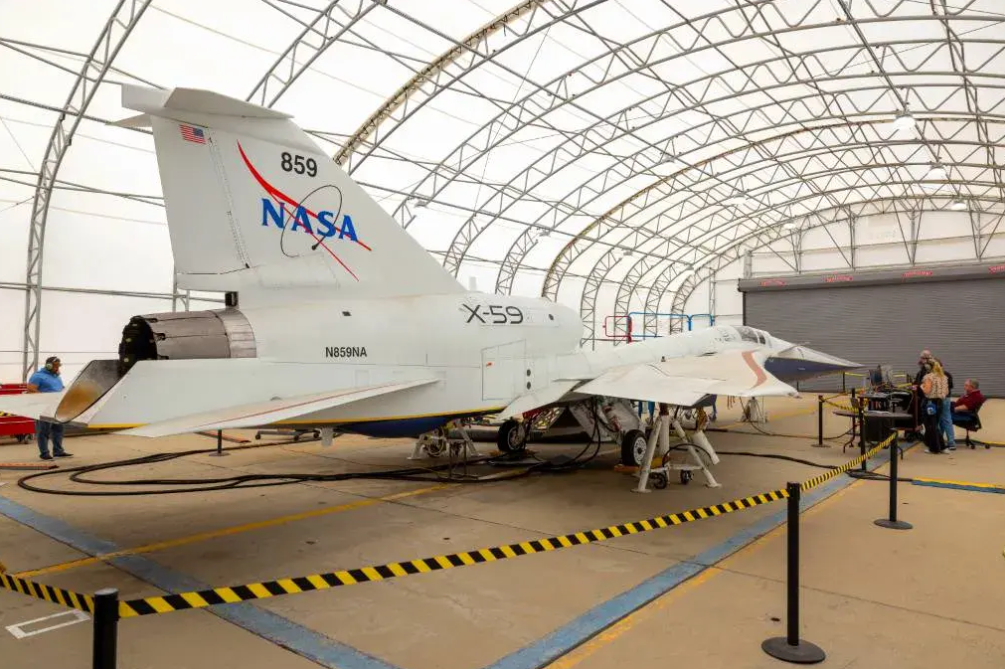

In movies and some places (sometimes in real life too), the number 13 might be the ultimate bad luck charm, but on the periodic table, this number represents one of the most sustainable and recyclable metals on earth – aluminium. Aluminium, the silent hero, is making its presence felt not only on the grounds but also in the sky. NASA's cutting-edge X-59 quiet supersonic research aircraft, featuring mostly aluminium in its construction, has made a significant stride in its journey.

Nicknamed as the "aluminium bird," testing, X-59 was put through its paces as its subsystems and flight computer were rigorously tested to ensure seamless coordination between hardware and software. This major milestone clears the runway for the X-59's highly anticipated first flight later this year, bringing the dream of quieter supersonic travel closer to reality.
X-59's surprising act
The supersonic research aircraft has just soared through a crucial phase without ever taking off. In a significant round of ground-based testing, engineers simulated high-altitude cruising conditions to fine-tune the aircraft's performance.
During testing simulations, engineers from NASA and Lockheed Martin brought the X-59's systems to life, minus the engine. When a pilot moved the control stick, the flight computer responded by adjusting the rudder or other control surfaces, just as it would in actual flight.
"The idea behind these tests is to command the airplane's subsystems and flight computer to function as if it is flying. We thought we might find a few things during the tests that would prompt us to go back and tweak them to work better, especially with some of the software, and that's what we wound up experiencing. So, these tests were very helpful," said Yohan Lin, the X-59's lead avionics engineer at NASA's Armstrong Flight Research Centre in Edwards, California.
At the same time, the aircraft was digitally tethered to a ground-based computer that fed it a steady stream of simulated flight data altitude shifts, speed changes, temperature swings, and system diagnostics. To the X-59, it all felt real. From inside the cockpit, pilots "flew" through these virtual skies, closely monitoring how the aircraft reacted, gaining vital insights before the real engine ever roared to life.
Also Read: NASA visits Constellium Ravenswood to celebrate Artemis partnership
How was the testing done?
This phase of testing, often called "iron bird" testing, typically uses a mock-up frame equipped with key subsystems. However, with the X-59 being a one-of-a-kind aircraft, engineers took a different route. Instead of building a replica, they used the actual jet, streamlining the process and cutting costs while still capturing the critical data needed to prepare for flight.
With the "aluminium bird" tests in the rear-view mirror, the X-59 is ready to roll literally. Next up are taxi tests on the runways beside Lockheed Martin's legendary Skunk Works facility in Palmdale, California, where the futuristic jet was born. These ground runs pave the way for the X-59's long-awaited first flight, bringing NASA one step closer to a quieter kind of supersonic travel. It's all part of the Quesst mission: to shatter the sound barrier without shattering the silence, making commercial supersonic flights over land a reality.
The ground-based simulation was designed to validate the integrated performance of the X-59's systems, which is an essential checkpoint in the development of any new aircraft. This meticulous process helps engineers spot and fine-tunes even the smallest adjustments, ensuring the aircraft is fully optimised and ready for flight. Unlike traditional astronaut training, where surprises are part of the drill X-59 pilots had a clear picture of the tests ahead. In fact, they played a key role in designing them, ensuring each run delivered targeted insights into how the aircraft's systems would respond.
Also Read: Aluminium alloys in aerospace
Image Credit- NASA
Responses








